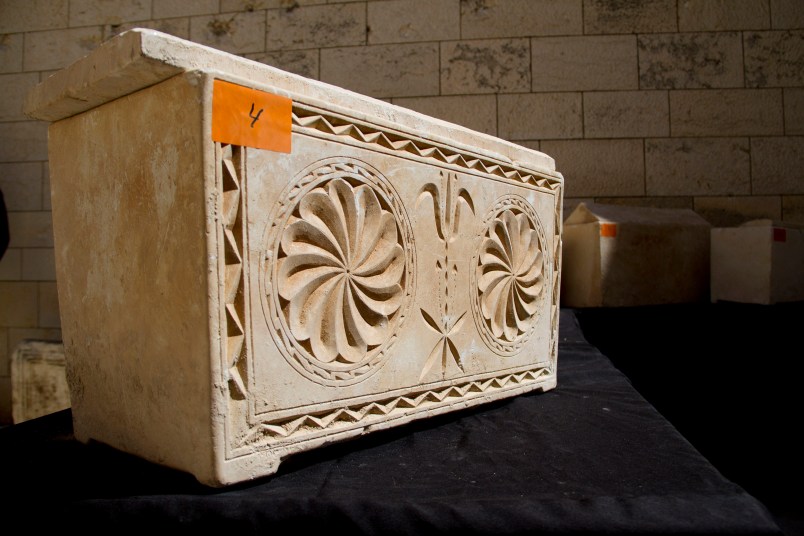JERUSALEM (AP) — The Israeli Antiquities Authority unveiled 11 ancient burial boxes Monday that were seized by police who broke up an apparent attempt to illegally sell them.
Officials say the boxes, or ossuaries, are 2,000 years old. Some are engraved with designs and even names, giving clues to their origin and contents. The boxes contain bone fragments and remnants of what experts say is pottery buried with the deceased.
The authority says the boxes were recovered last Friday in Jerusalem when police observed a suspicious nighttime transaction involving two cars, four individuals and the 11 boxes near a checkpoint on the outskirts of Jerusalem.
Once police realized the boxes were of archaeological significance, they alerted the Antiquities Authority. It is not yet clear how the suspects got hold of the boxes.
Two of the suspects are still being held and the others are under house arrest, according to the authority.
These boxes, or ossuaries, are believed to originate from the Second Temple Period. Experts say they are from within a 1.3 mile (2 km) radius of Jerusalem.
The Antiquities Authority’s deputy director, Eitan Klein, said he believes the boxes originated near Jerusalem’s Mount Scopus. Thieves may have looted them from a cave where they were deposited, or the cave may have been uncovered inadvertently during a construction project or excavation, he said.
The Antiquities Authority already has in its possession over 1,000 of these ancient boxes, but each one is significant, said Klein.
“We can learn from each ossuary about a different aspect of language, art and burial practice,” he said. “And we can learn about the soul of the person.”
Some of the 11 boxes feature elaborate engravings, which Klein says indicate the wealth and high social status of the deceased. Two were inscribed with names — Yoezer and Ralphine.
According to common Jewish practice of the time, the dead were not buried but laid out in a cave for a year. The bones were then gathered and stored in the special boxes.
According to Israeli antiquities law, all antiquities discovered or found within Israel are considered property of the state.
In the past, allegations of forgery have been made over certain ossuaries and their inscriptions.
But Klein said the engravings on the recovered boxes indicate the 11 boxes are authentic. “Everything here smells authentic,” he said.
Copyright 2014 The Associated Press. All rights reserved. This material may not be published, broadcast, rewritten or redistributed.










